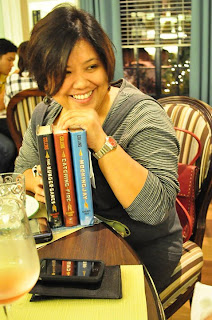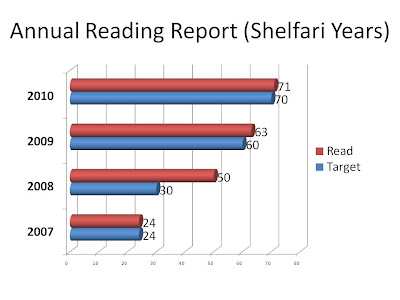February is poetry month for the Flippers.
Category: I FLIP PAGES
ISBN: 978-971-27-24169
Groovy.
I was born in the late 60s, which means that I was too young to have truly lived the psychedelia that was the 70s. Sideburns, combos (live bands), and all those mind altering drugs. This book gives me a sneak peek at those groovy years I missed out on.
What I found most amusing was what was then considered “society.” Now, we say posh or “sosyal.” Back then, it was society for parents to name their male kids Willie, Boy, or Rene and their girls Susie, Margie, or Tess as opposed to picking saintly names from calendars.
Bobby, the name of the book’s main character, was also considered a society name. Bobby Heredia is a teenager. The adults in this book seem to think that the whole teenage concept is a fairly newfangled thing. And Bobby’s generation of teenagers is a generation more troubled, more complicated, more jaded.
The teenagers of the 70s were as concerned about being cool as today’s teens. To be graded uncool back then would be called “overacting” or “OA.” Like “scooters were fun, but motorcycles were overacting, especially if you dressed up for it in goggles and helmet and black leather jacket.” “Pants should be tight, but skintight pants were overacting.” Back then, it was cool to use street corner language like “diahe” and “tepok,” and it was overacting to use American idioms like “get lost” or “dig.” Also considered overacting were wearing red, drinking scotch on the rocks, dancing the twist, going to Baguio in summer, and drag-racing on Dewey. And Pompoy Morel, Bobby’s enemy, exemplified all that was overacting.
Bobby hates everything that is overacting. He scorns hypocrisy, and as he starts looking for what is true and honest among all the fake people around him, he develops the ability to see beyond people’s layers, beneath their pretenses. First, he starts seeing people stripped off of their clothes, revealing all the ugly, filthy things they hide. Maybe I’m being obtuse because I don’t want to spoil it for you. But what I’m saying is that he starts seeing naked people. And not in a fun way. Then, he starts seeing even deeper inside to their bare bones.
This magical ability, all that he sees, trouble him and cause him to run away from home and to act strangely and violently, especially towards Pompoy Morel. Eventually, he realizes how judgmental and self righteous he has been. He learns the lessons that help him to be more forgiving, more accepting. But I’m revealing too much now.
I found the ending and its explanation of the message a bit too spoon-fed. Though it, at least, confirms that I got the story and its message, I wish it had left more space for the readers to interpret the story differently.
Nick Joaquin is obviously a great, a gifted writer. But I’m not yet in love with him, even though I feel the pressure to be reverent of a National Artist. From what I’ve read so far (Woman with Two Navels, read ages ago, and this) I am intrigued to discover more.
Candido’s Apocalypse was first published in 1972 as part of Tropical Gothic, a copy of which is yellowing in my shelf. This book has convinced me to include Tropical Gothic in my 2011 TBR.
My Best Read for 2010
And my favorite read for 2010 is (drummmmrrrrrrooooooollll) Suzanne Collins’s The Hunger Games Trilogy.



2010’s Best
One of the traditions that our book club, Flips Flipping Pages, has developed is to start the year sharing with each other our best and worst reads of the previous year.
- The Passion by Jeanette Winterson
- The Amazing Adventures of Kavalier & Clay by Michael Chabon
- The Hunger Games Trilogy by Suzanne Collins
- Anansi Boys by Neil Gaiman
- Blackbird House by Alice Hoffman
- My Life in France by Julia Child
- Girl in Hyacinth Blue by Susan Vreeland
- Falling Off the Map by Pico Iyer
- The Pillars of the Earth by Ken Follett
- Satanic Verses by Salman Rushdie
- Blu’s Hanging by Lois-Ann Yamanaka
- The Complete Persepolis by Marjane Satrapi
ISBN: 0316168815
I read this book for last year’s A to Z Challenge. There were a number of S authors on my TBR, but I chose this because I’ve read some pretty good things about it. Plus there’s a movie that I could watch right after reading the book. Now, I think I’ll wait a while before I watch that film, to give me time to forget the book and the unpleasant memory it left behind.
I Flipped through 71 books in 2010

As for 2010, I targeted to read 70 books, and I thought that I achieved that close to midnight of December 31. It turned out that I miscounted, and I actually read 71 books! Yey, me!

- Pugad Baboy XX 20th Edition by Pol Medina
- The Passion by Jeanette Winterson
- How the Garcia Girls Lost their Accents by Julia Alvarez
- The Game by A.S. Byatt
- The Shadow of the Wind by Carlos Ruiz Zafon (reread)
- The Amazing Adventures of Kavalier & Clay by Michael Chabon
- High Fidelity by Nick Hornby (reread)
- The Hunger Games by Suzanne Collins
- The Great Automatic Grammatizator and Other Stories by Roald Dahl
- The Gathering by Anne Enright
- Twilight by Stephenie Meyer
- Mantissa by John Fowles
- Anansi Boys by Neil Gaiman
- Blackbird House by Alice Hoffman
- The Darwin Awards by Wendy Northcutt
- My Life in France by Julia Child
- Chasing Cezanne by Peter Mayle
- Girl with a Pearl Earring by Tracy Chevalier
- Girl in Hyacinth Blue by Susan Vreeland
- Falling Off the Map by Pico Iyer
- Kubori Strips for the Soul by Michael David
- Best Things in Life, A Second Collection of Comic Strips from Kuborikikiam.com by Michael David
- Postsecret by Frank Warren
- The Pretenders by F. Sionil Jose
- On the Road by Jack Kerouac
- Hallmark Creative and Thoughtful Gift Giving by Leah Ingram
- The Left Hand of Darkness by Ursula Leguin
- What Now? by Ann Patchett
- While I Was Gone by Sue Miller
- Fables, The Deluxe Edition by Bill Willingham
- The Mystic Masseur by VS Naipaul
- You Can Reach the Top by Zig Ziglar
- A Personal Matter by Kenzaburo Oe
- The Pact by Jodi Picoult
- A Good Year by Peter Mayle
- Boys’ Toys Bikes by Hulton Getty
- Wine 101 by Gerald C. Hammon
- Fifty Days by Sarah Quigley
- Catching Fire by Suzanne Collins
- Mockingjay by Suzanne Collins
- Alamat ng Paniki by Segundo Matias
- Fetch by Becky Bravo, illustrated by Blooey Singson
- Pied Piper
- Ang Mga Kwento ni Lola Basyang- Anting Anting, retold by Christine Bellen
- Alamat ng Buwaya by Segundo Matias
- Tell Me About Beatrix Potter by John Malam
- The Pillars of the Earth by Ken Follett
- 4000 Years of Christmas by Earl W. Count and Alice Lawson Count
- Flight to the Stars and other Stories by Samantha Mae Coyiuto
- Billy Bryson’s African Diary by Bill Bryson
- Successful Time Management byPatrick Forsyth
- Satanic Verses by Salman Rushdie
- The End of the Affair by Graham Greene
- Lovely Bones by Alice Sebold
- The Many Moods of Plantation Bay
- Picture Palace by Paul Theroux
- Journey to Ellis Island by Carol Biernan
- The Music School by John Updike
- Slaughter House-Five by Kurt Vonnegut
- Love, Ten Poems by Pablo Neruda Pablo Neruda
- The Fat Woman’s Joke by Fay Weldon
- My Secret Bully by Trudy Ludwig
- Twas the Night Before Christmas on IPad. by Clement Clarke Moore
- A Loyal Character Dancer by Qiu Xialong
- Blu’s Hanging by Lois-Ann Yamanaka
- Teo’s Trash Can by Grace D. Chong
- Big Eyes, Small Eyes by Grace D. Chong
- The Magic of Apo Mayor, 31 pages Grace D. Chong
- Half and Half by Grace D. Chong
- Nana by Emile Zola Emile Zola
- The Complete Persepolis by Marjane Satrapi
ISBN: 9789712724046
Complimentary copy from Anvil Manila
Read: January 2, 2011
This book also elucidates the difference between acronyms (abbreviations that can be pronounced as words) and initials (an abbreviation read by its individual letters). AIDS is an acronym, and HIV is an initial. And BURMA is an acronym that means, Between Us, Remember Me Always. MANILA, you will discover, is not just a city, but is a greeting that means, May All Nights Inspire Love Always. And I’m pretty sure your life would be so much better now that you know that PASIG stands for Please Always Say I’m Gorgeous.
If I may, I’d like to add to Lacaba’s research. On page 66, he discusses the term ala verde (free for all), and in the process of dissecting the term, he touches on the meaning of steak a la pobre, which he defines as “steak cooked in the style of the poor.” I dare to venture a deeper analysis. My guess is that Steak ala Pobre is the bastardized form of the French Steak Au Poivre, which is “a classic French steak dish with a creamy peppercorn sauce.” The Steak ala Pobre I know of is also smothered with peppercorns. It’s a delicious dish, but had it retained its name as steak au poivre, it would probably be not as popular for rich and pobre diners alike. A hungry carnivorous wouldn’t want to bother with French pronunciations. But that’s just my theory. I have “no lexicographic proof.”
Though he seems to have done due research, Lacaba offers the same disclaimer in this book: “My assertions here are based purely on chika, chismak, and chukchak.”
Plangak!
I Flip Pages While…
 image from http://vi.sualize.us/view/f477949c51bbee8b0597756f478f70e5/
image from http://vi.sualize.us/view/f477949c51bbee8b0597756f478f70e5/
- Gothic! Ten Original Dark Tales, each tale from a different author like Neil Gaiman, Garth Nix, among others, et al
- Faith Stories, with contributions from Gabriel Garcia Marquez, Nathaniel Hawthorn, Salman Rushdie, Amy Tan, Yukio Mishima, et al.
Given the time limitation, short stories make sense, right? The basket also contains a few prayer devotional books to start the day right and one by Zig Ziglar for picker-uppper quotes for self affirmation.
28
My husband keeps on bugging me, “So how many books did you buy? So how many books did you buy?”

ISBN: 0140291091
Purchased: August 25, 2000
from National Bookstore
Read: November 20, 2010 (in time for the FFP book discussion, but in reality, I finished the last few pages the next day.)



